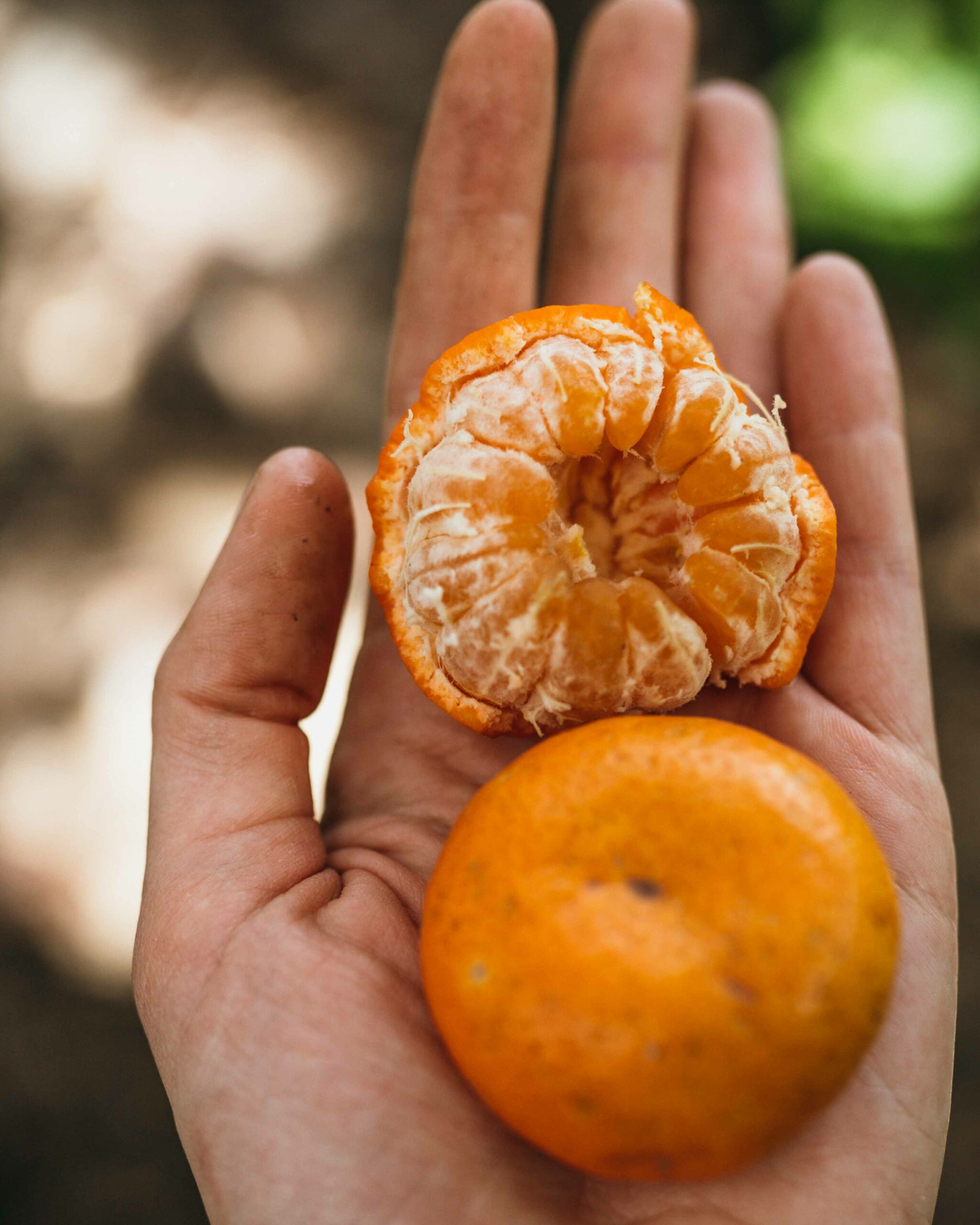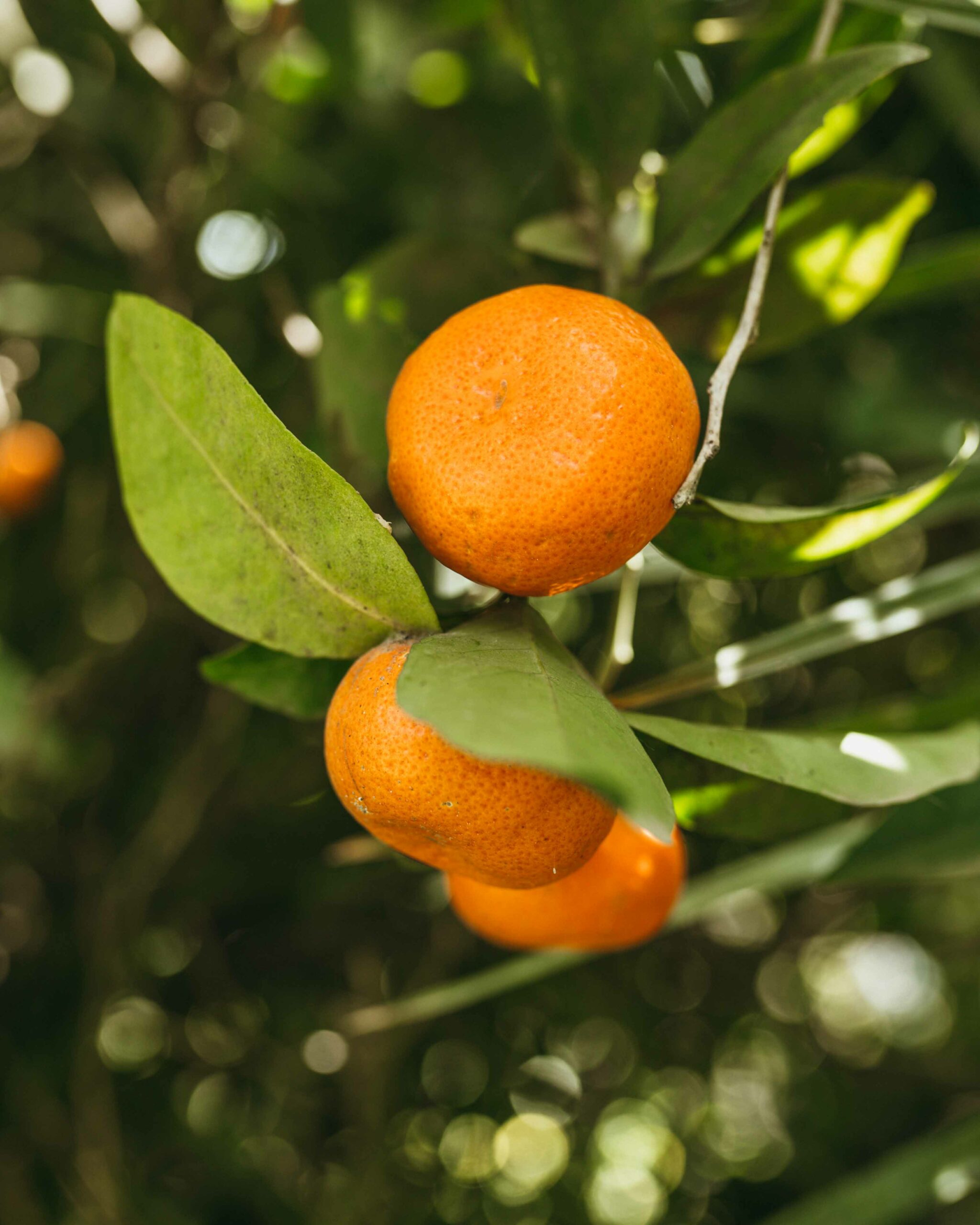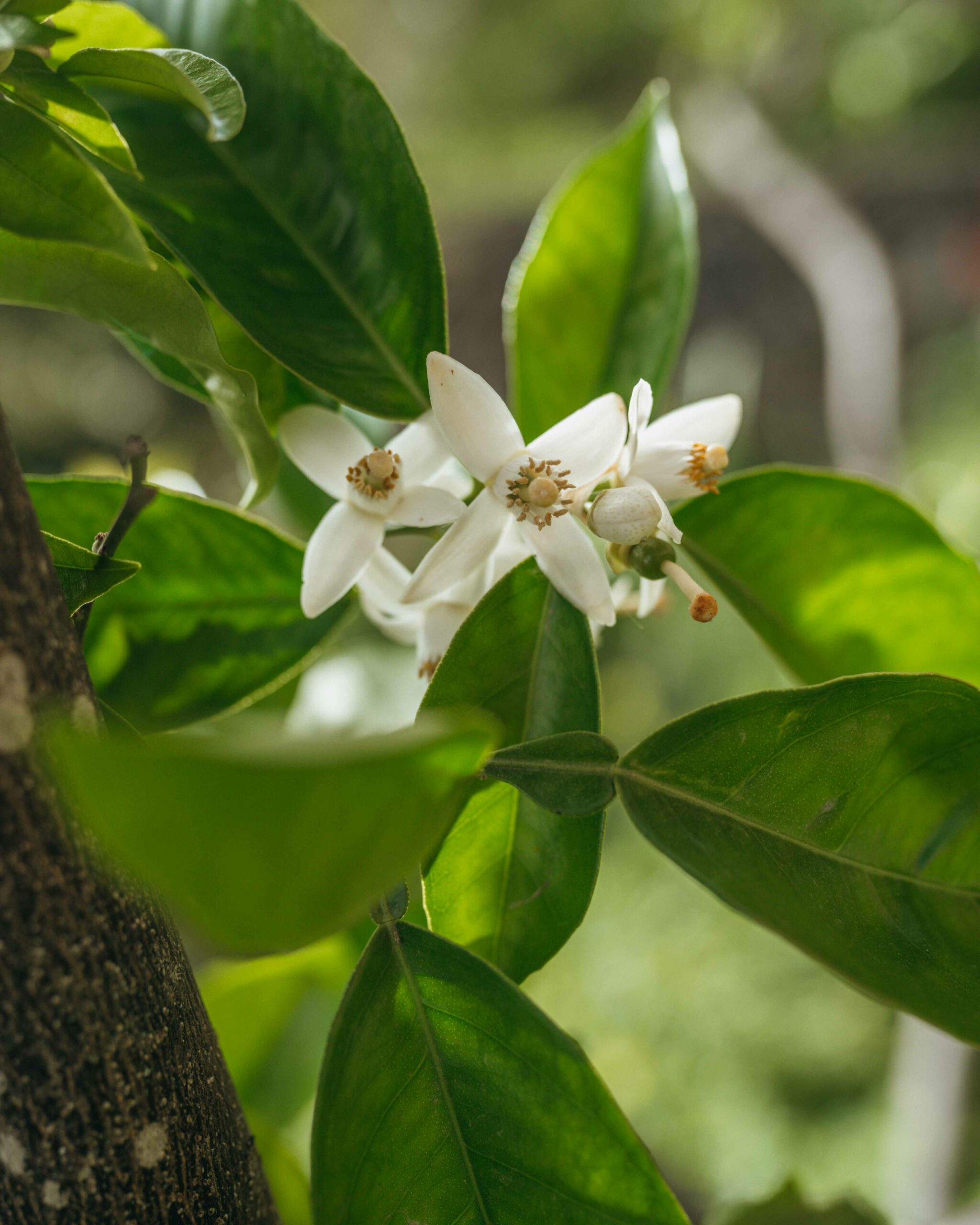Citrus reticulata
MANDARINE
Englische Bezeichnung: Tangerine
Spanische Bezeichnung: Mandarina
Familie
Rautengewächse (Rutaceae)
Verwendbare Teile:
Frucht, Schale, Blüten & Blätter
Hauptbestandteile:
Mineralstoffe: Kalium
Vitamine: C
Sekundäre Pflanzenstoffe: Antioxidantien, phenolische Substanzen (Flavonoide, Carotinoide), ätherische Öle
Ernte-Hinweise:
Zwei wichtige Eigenschaften für die Reife: die Frucht wächst nicht mehr und sie verfärbt sich. Gleichzeitig gibt sie einem Druck auf die Schale leicht nach.
Reife Mandarinen können bis zu 14 Monate am Baum bleiben.
Wenn man Zitrusfrüchte ernten will, muss man eine Schere zur Hand nehmen. Da die Früchte meist fest am Baum sitzen, schneidet man sie knapp einen Zentimeter oberhalb des Stielansatzes an der Frucht ab. Wenn die Frucht abgerissen wird, droht eine Verletzung entweder des fruchttragenden Zweiges oder der Schale.
Verwendung:
Fruchtfleisch: Obstsalat, Salate, Säfte, Smoothies, Marmalade, Desserts
Schale: Schalenabrieb zum Backen
Blüten & Blätter: Tee, Desserts
Die ursprüngliche Herkunft der Zitruspflanzen ist Südostasien.
Da Zitrus eine Jahrtausende alte Kulturpflanze ist, die gezüchtet und veredelt wurde und wird, gibt es heute keine bekannte Wildform der Urfrucht mehr. Jedoch gibt es ein sehr breites Spektrum an verschiedensten Zitrusfrüchten, einschließlich der Mandarine.
Sie ist die süßeste Zitrusfrucht überhaupt.
Family
Rhombus family (Rutaceae)
Usable parts:
Fruit, peel, flowers & leaves
Main components:
Minerals: Potassium
Vitamins: C
Secondary plant substances: antioxidants, phenolic substances (flavonoids, carotenoids), essential oils
Harvesting guideline:
Two important characteristics for ripeness: the fruit stops growing and it discolours. At the same time, it yields slightly to pressure on the skin.
Ripe mandarins can remain on the tree for up to 14 months.
If you want to harvest citrus fruits, you need to take a pair of scissors. As the fruit is usually firmly attached to the tree, it is cut off just under one centimetre above the base of the stalk on the fruit. If the fruit is torn off, there is a risk of damaging either the fruit-bearing branch or the skin.
Use:
Fruit flesh: fruit salad, salads, juices, smoothies, marmalade, desserts
Peel: Peel abrasion for baking
Flowers & leaves: tea, desserts
The original origin of citrus plants is South East Asia.
As citrus is a cultivated plant that is thousands of years old and has been cultivated and grafted, there is no known wild form of the original fruit today. However, there is a very wide range of different citrus fruits, including the mandarin. It is the sweetest citrus fruit of all.
Familia
Familia Rhombus (Rutaceae)
Partes utilizables:
Fruta, cáscara, flores y hojas
Componentes principales:
Minerales: Potasio
Vitaminas: C
Sustancias vegetales secundarias: antioxidantes, sustancias fenólicas (flavonoides, carotenoides), aceites esenciales
Guía de cosecha:
Dos características importantes de la madurez: el fruto deja de crecer y se decolora. Al mismo tiempo, cede ligeramente a la presión sobre la piel.
Las mandarinas maduras pueden permanecer en el árbol hasta 14 meses.
Para recolectar los cítricos, hay que llevar unas tijeras. Como la fruta suele estar firmemente sujeta al árbol, se corta algo menos de un centímetro por encima de la base del pedúnculo de la fruta. Si se arranca el fruto, se corre el riesgo de dañar la rama fructífera o la piel.
Uso:
Pulpa de la fruta: macedonia, ensaladas, zumos, batidos, mermeladas, postres
Cáscara: Abrasión de la cáscara para hornear
Flores y hojas: té, postres
El origen original de los cítricos es el sudeste asiático.
Como los cítricos son una planta cultivada que tiene miles de años y ha sido cultivada e injertada, hoy en día no se conoce ninguna forma silvestre de la fruta original. Sin embargo, existe una gran variedad de cítricos, entre ellos la mandarina. Es el cítrico más dulce de todos.









































